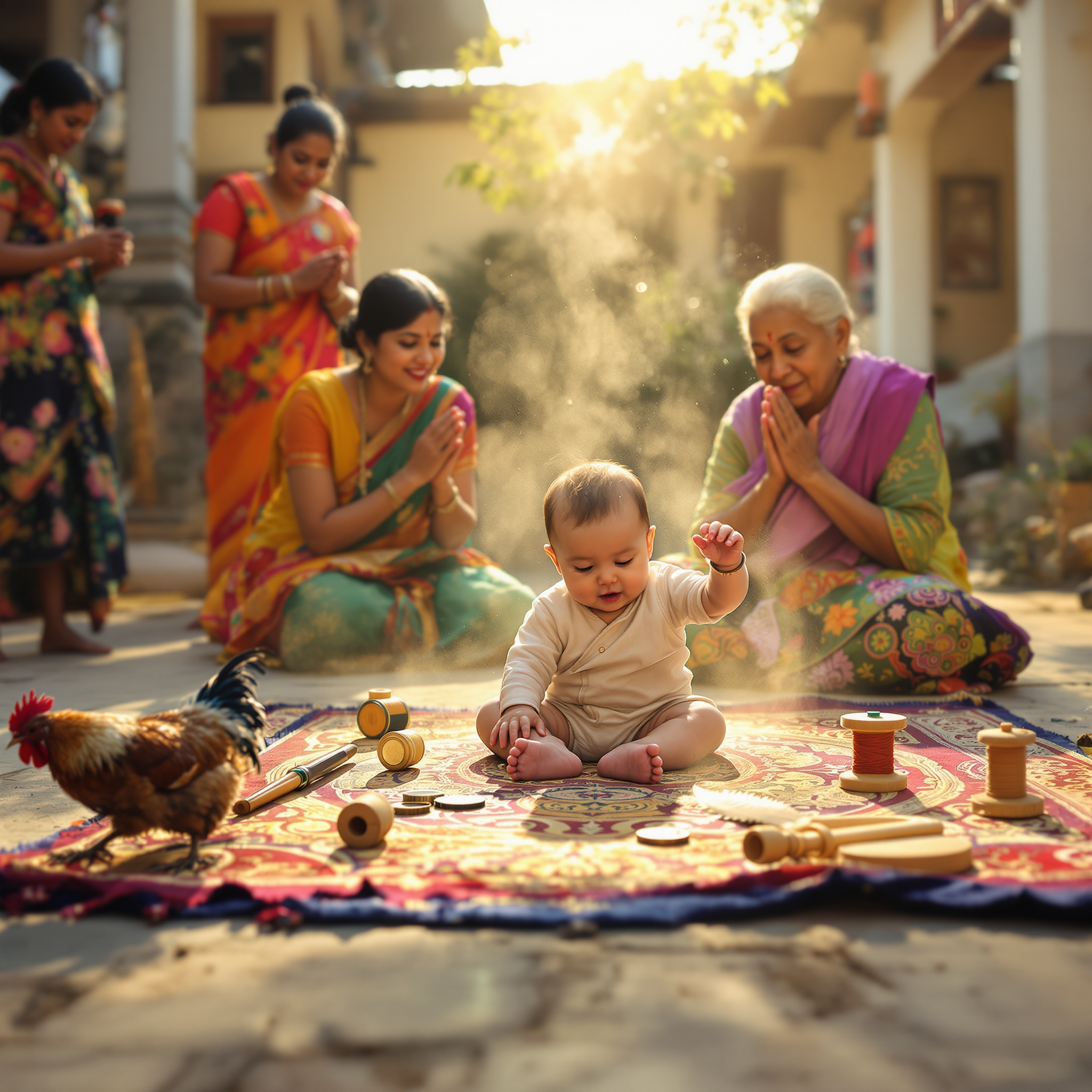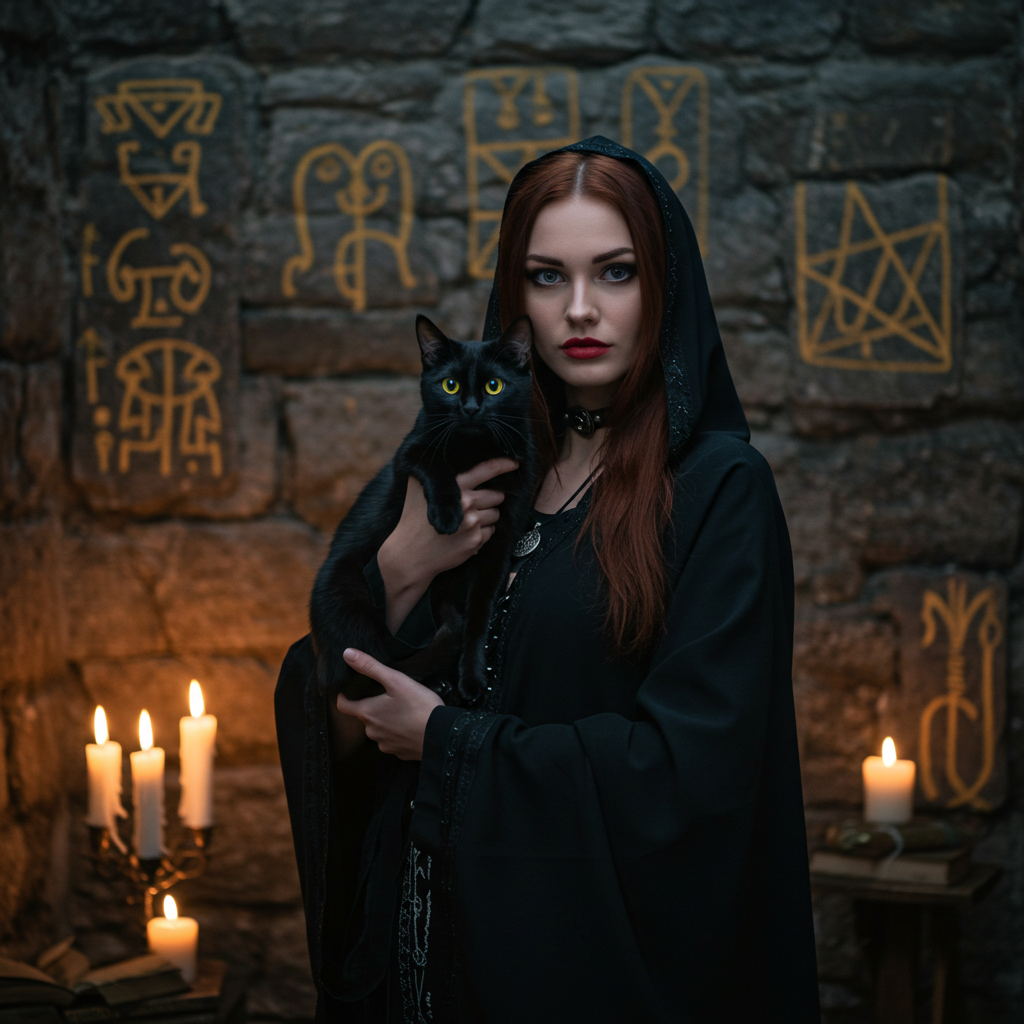According to European witch-hunting beliefs from the 16th to 18th centuries, ownership of a black cat was often viewed as incriminating evidence of witchcraft. The black cat was believed to be a “familiar”—a supernatural creature or demon that served and empowered the witch. These animals were thought to perform magical services such as carrying messages to demonic forces, causing illness or misfortune, and siphoning magical energy for their owner’s use. Claims frequently included descriptions of cats drinking blood, whispering secrets, or displaying human-like intelligence. The association became particularly intense in cases where a cat was present during local misfortunes, appeared mysteriously, or avoided sacred objects. The nocturnal habits, independence, and aloofness of cats—especially black ones—contributed to their symbolic role as creatures of the occult.

A baby’s future career or fate is predicted by the first object they select during a ceremonial setup.
In several Asian and Eastern European cultures, a traditional ceremony is held for babies usually around their first birthday. Known


